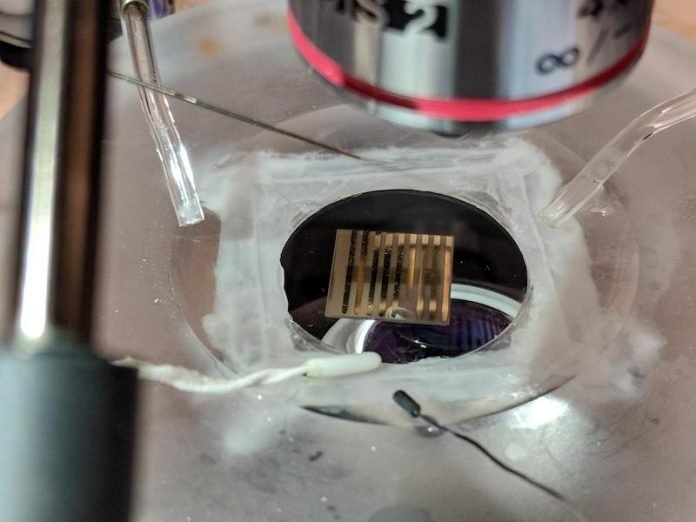
In a new study, researchers have developed a new quantum material that one day may enable the brain to detect its own diseases.
The material may “think” like the brain and is sensitive to early signs of neurological diseases such as Parkinson’s.
The finding may help create new diagnosis and treatment tools for people with brain diseases.
The research was conducted by Purdue University and Argonne National Laboratory researchers.
The team focuses on the lingua franca, which is ionic currents that help the brain perform a particular reaction such as sending a signal to breathe.
Detecting ions means also detecting the concentration of a molecule, which serves as an indicator of the brain’s health.
In the study, the researchers showed that a quantum material could achieve this. It has a unique edge — strong, “correlated” electrons — that make the material extra sensitive and extra tunable.
It helps bridge the gap between how electronics think, which is via electrons, and how the brain thinks, which is via ions.
The researchers tested this material on two molecules: Glucose and dopamine. Detecting dopamine levels early is very important for treating Parkinson’s disease.
They placed the material beneath an animal model’s brain slice and found that the material is about nine times more sensitive to dopamine than currently available methods.
The researchers suggest that this material could sense the atoms of a range of molecules, beyond just glucose and dopamine.
Their future plan is to create a way for the material to “talk back” to the brain.
The team also suggests that in the long run, this material might even have the ability to “download” the brain.
This means patients could retrieve memories from devices implemented into the brain when brain functions start deteriorating.
The lead author of the study is Hai-Tian Zhang, a Gilbreth postdoctoral fellow at Purdue’s College of Engineering.
The study is published in Nature Communications.
Copyright © 2019 Knowridge Science Report. All rights reserved.



